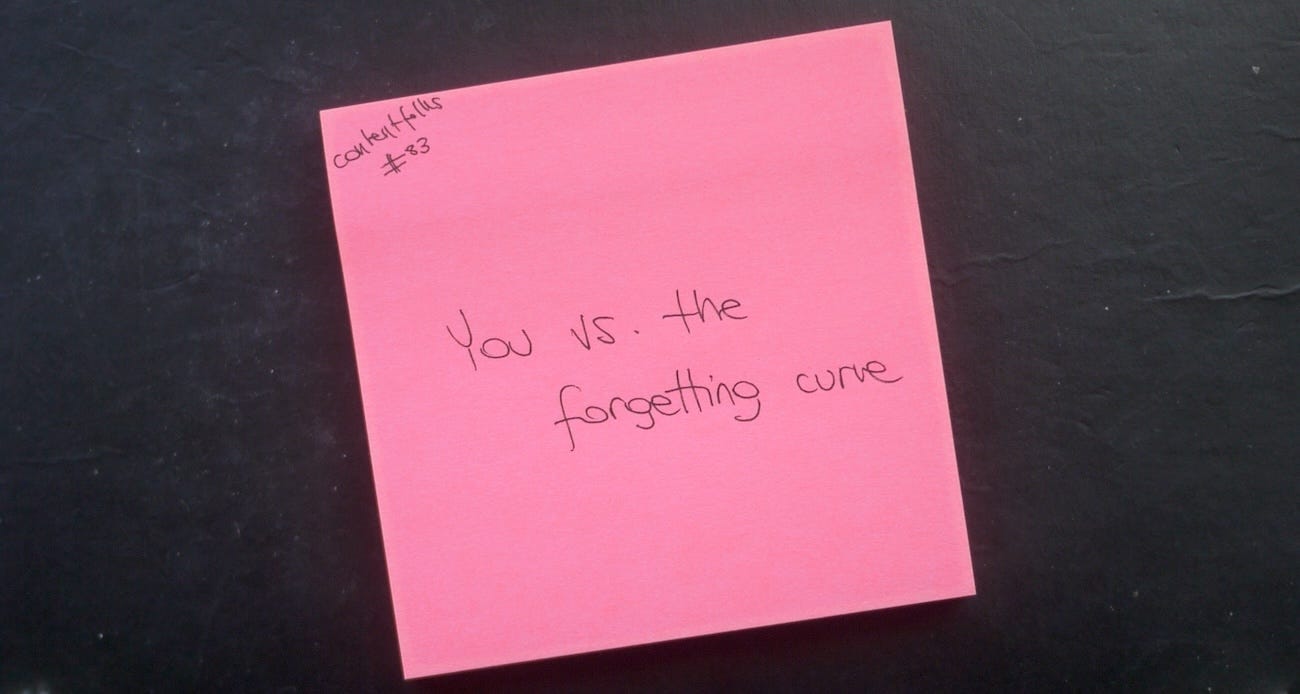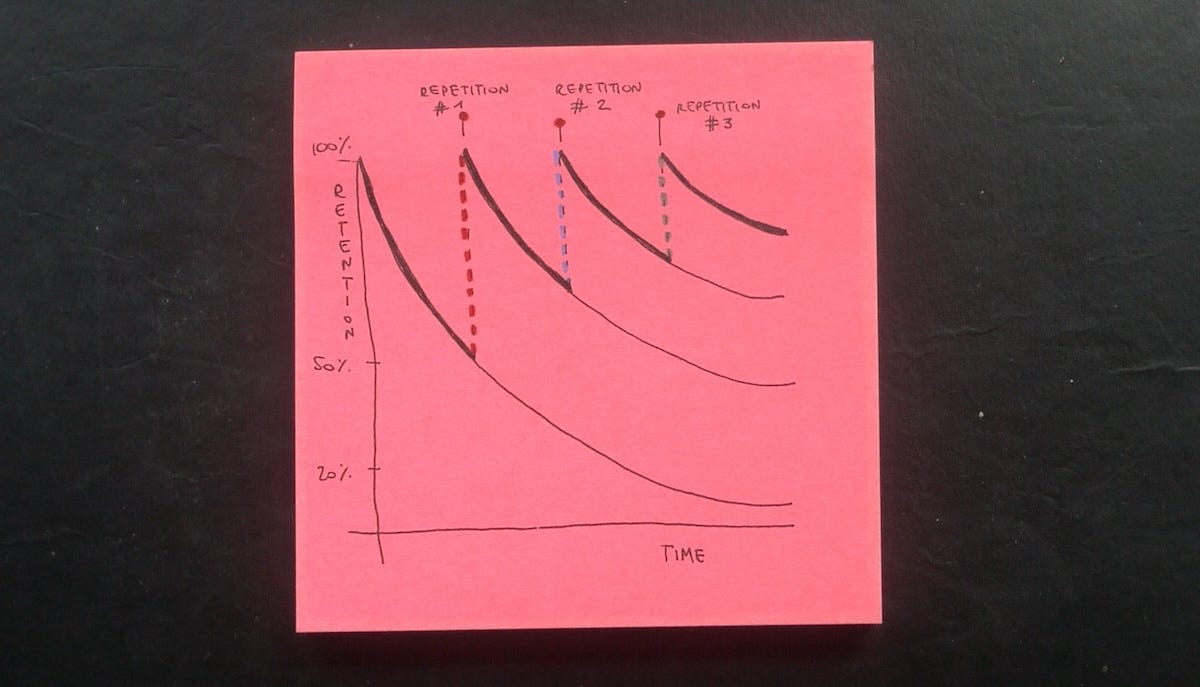cf #83: you vs. the forgetting curve
You are reading contentfolks—a fortnightly sporadic blend of sticky notes, big content ideas, and small practical examples. Thank you for being here! ~fio
Hey there 👋
One of the best bits of growth advice I ever got wasn’t even advice—it was a throwaway line in a conversation I had in my first weeks at Hotjar that went something like this: “when you start getting tired of saying it, that’s when other people are just starting to hear it.”1
This is, in an extremely over-simplified way, what (content) marketing is about: being deliberately redundant and repeating a message over and over, so people think of you when they are eventually ready to take action. But that Hotjar conversation was not about content, or even about marketing; we were talking about communicating effectively with teams and stakeholders, getting buy-in for our asks, and beating the forgetting curve.
The forgetting curve 🎢
The forgetting curve is a model that describes in theory what most of us know in practice: we are not very good really quite bad at retaining information after we encounter it for the first time:

You can have a more or less steep curve depending on variables like how complex the information was, how interested you were, how much attention you paid, and how good your memory is—but the general concept remains: as soon as you hear about or learn something, you start to forget it. And you start to forget it fast.
The more time goes on, the less information you retain—unless, twist!, you get exposed to it again at key points on the curve. Spaced repetitions2 help build memory and retain information for longer compared to one-off exposure:
Here is how this concept applies to our work lives. The things we know, care about, and are often on our mind, like:
The team goals we announced at the beginning of the quarter
The career aspiration we mentioned to our manager once in a 121
The brilliant idea(s) we shared on a Zoom meeting two weeks ago
The new piece of content we posted about in Slack last week
…all of those things, and more? Nobody remembers them.
And it’s not that other people forget because they are selfish or don’t care—it’s because we plonked a bit of information at the top of their forgetting curve, once, and that bit of information has been sliding down into oblivion faster than an over-excited kid on a waterpark slide.
💡A few practical examples
Because the forgetting curve exists, being an effective communicator might well require us to share the same information multiple times, at the right intervals, across different channels, without ever assuming that our teams and stakeholders will magically remember everything after the first iteration.
That’s why “when you start getting tired of saying it, that’s when other people are just starting to hear it” felt like such powerful growth advice, back then. It made it quite obvious that sometimes the problem is less in the message and more in the frequency with which it gets delivered.
Here are some examples of what repetition looks like:
At Hotjar, whenever it was my turn to present work live at the company all-hands, I’d start from a variation on this sentence: “Hey, this is fio for the marketing team. As a reminder, the content/marketing team’s objective is to…” → this helped get our team narrative across and ongoingly remind other people of what we were doing, and why.
At Aula, the weekly all-hands started with the CEO reading the company vision and mission out loud → by the time you’d been there three months, you’d have heard the same concepts being repeated at least 15 times, and they became really hard to forget (you better believe I was 100% clear on the vision and mission—if asked, I could have recited them out loud like a business poem).
At Float, I’m doing an experiment in Q3 where I will start my Loom video updates, important Slack messages, and monthly team recaps with a reminder of our goal and assumptions for the year/quarter → that way, I can reinforce the message for multiple teams and get it across in several ways and formats.
Was Aula’s CEO feeling redundant for saying the same thing for 100+ weeks in a row? Probably often. Do I get bored of repeating the same message over and over? Sometimes.
…but does it work? Always. 😉
Give it a try!
Back then, I thought the person saying it was very wise and a good observer of human behaviour—turns out they were mostly directly quoting from LinkedIn’s former CEO, who was in turn quoting from a White House advisor. I tracked down the 2-minute video that I think is where this quote loop originates. Worth a watch.
I had more fun reading this than I thought I would → https://www.ncbi.nlm.nih.gov/pmc/articles/PMC5126970/





I really enjoyed this!
The CEO at the company I work for has started doing something similar to the CEO at Aula - repeating the company’s objectives and values when giving updates on changes each quarter. It was suggested by multiple team members at the end of 2023 as something we could improve as a company and it’s been really helpful having the reminder so that we know what we’re working towards and how our goals align with our values.
Hi Fio,
That's a really great piece!
I like the idea of repeating the mission of the company when starting a meeting. Not sure about Slack though, but keep us updated in the coming weeks to see how it goes!
Best.